Tucked between the dining room and the pantry, I’m sitting in the Voyageur Wilderness Programme map room with my feet on the coffee table enjoying a cup of blueberry tea. On the shelf behind me sits a Métis ceremonial headdress along with two beaver pelt bourgeois hats. Madeleine Savoie is tracing the many lakes and rivers of her favorite Quetico canoe routes on the 11 topographic maps cut and pasted together. To scale the map room wall would be 90 kilometers wide and the ceiling would be 60 kilometers high.
Venturing into Quetico with the Voyageur Wilderness Programme
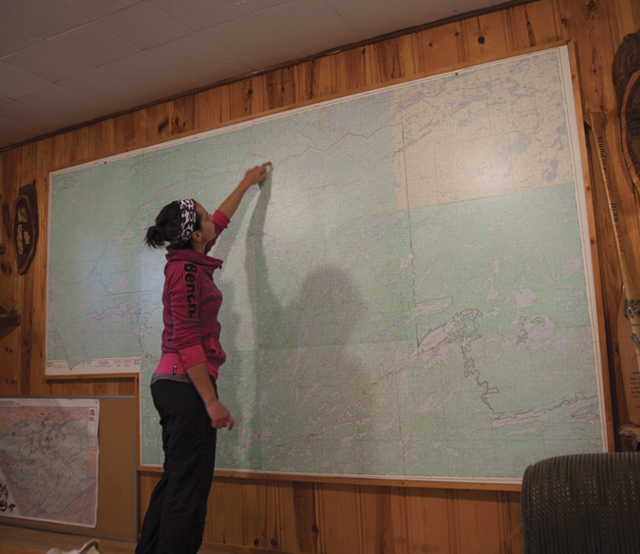
At the bottom of the collage, at about her knees, Madeleine points to the dotted line that is the 150-mile Canada-United States border joining Quetico Provincial Park to the Boundary Waters Canoe Area Wilderness. The Boundary Waters Canoe Area is not as big as Quetico yet is said to be the most visited wilderness area in America. Some 2,000 marked campsites stretch over 1,200 miles of canoe routes and 12 hiking trails see 250,000 visitors every year. Quetico is wilder by comparison with no marked camping sites or portages and it sees only 11,000 visitors per year.
Voyageur Wilderness Outfitting was one of the first companies to provide outfitting services for backcountry canoeists entering Quetico. Fifty-seven years later it is still one of only a handful of companies serving just 21 entry points to the 1.1 million acres of protected wilderness. Madeleine points to the spot of the map where we are sitting on Voyageur Island. It is only a short paddle to where we’ll be lifting over into the park.
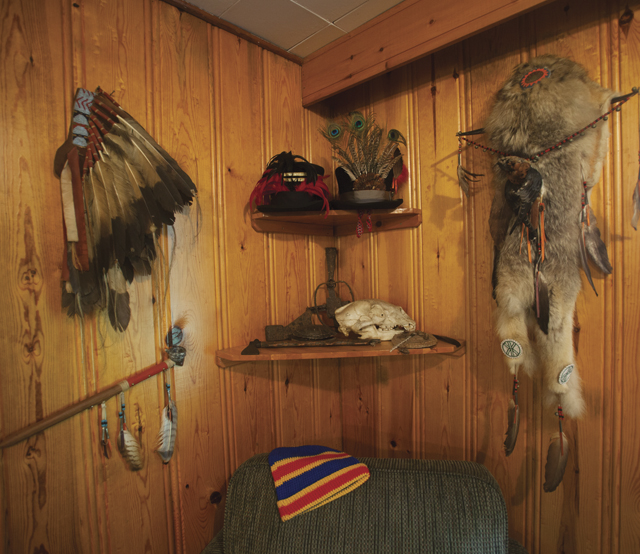
My twelve-year-old son Doug and I fly into Northwestern Ontario where we meet Paul Anthony Pepe, manager of tourism for the City of Thunder Bay. Pepe knows the reason paddlers come to the North is wilderness areas like Wabakimi, Woodland Caribou and Quetico. He’s positioning Thunder Bay as “the urban gateway and basecamp for the region’s outdoor adventures”.
We arrive a day early like Pepe hopes all wilderness travellers will do. We stay the night at the historic downtown Prince Arthur Hotel overlooking Lake Superior and Thunder Bay’s newly rejuvenated waterfront marina park.
This is not my first rodeo in the North. I spent five years in Thunder Bay getting three degrees in outdoor recreation, geography and school teaching. Doug and I tour the Lakehead University cam. Includes pancakes, saunas, good coffee and the hotels where I used to find the cheapest pitchers of draft beer.
The Nym Lake access to Quetico Provincial Park is two left turns leaving the airport and then a lonely two-hour drive west on the Trans-Canada Highway. Before we get to the old mining and lumber town of Atikokan, that now calls itself the Canoeing Capital of Canada, we make our final left turn onto a gravel road which dead ends in a parking lot at the waters edge. Doug and I meet up with documentary filmmakers Goh Iromoto and Courtney Boyd along with Ontario Tourism’s adventure partnership coordinator Steve Bruno, who put together this trip to Voyageur Island.
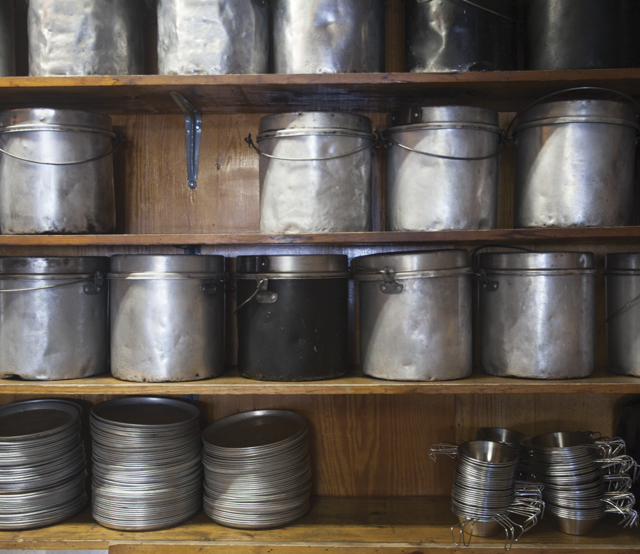
Michelle Savoie greets us at the dock on Voyageur Island. She is dressed in her flowery voyageur chemise, corde du roi, sash and moccasins. I offer a handshake which she knocks aside to give me great big hug. Michelle has been advertising her outfitting business in Canoeroots magazine for the past 16 years—nearly as long as she’s been inviting me and my family to visit.
We are shown to our Simon McTavish lodge room. All the buildings are named after famous figures from the fur trade. Inside hangs a historic Quetico canoe route map, a Hudson’s Bay Company point blanket and of course, a paddle. The room is rustic and cozy—a perfect place to spend a night before or after a wilderness trip. But we spend very little time here except to sleep.
The main lodge has been the meeting place for thousands of groups for almost six decades. The coffee is fresh, pewter mugs line the shelf above and the fruit bowl is overflowing. In the great room an old guitar rests in the corner against a bookshelf stuffed tightly with adventure stories, volumes of poetry and dog-eared interpretive guides. These pine walls have heard stories of grand adventures and the tables have held three generations of cribbage, Scrabble, and Monopoly. While Doug is learning the rules of Settlers of Catan, I sit down with 82-year-old Guy Savoie to learn the history of this place.
Voyageur Wilderness Outfitters was started in 1958 by Charlie Ericksen and Jean Goff, he tells me. The couple had met in Duluth, Minnesota where Goff was an executive with Sears, Roebuck & Company. She had lost a son and wanted to develop a youth program or camp in the Duluth area. Ericksen was a conservation officer with the forest service. How the two ended up in Atikokan in Northwestern Ontario, Guy isn’t sure.
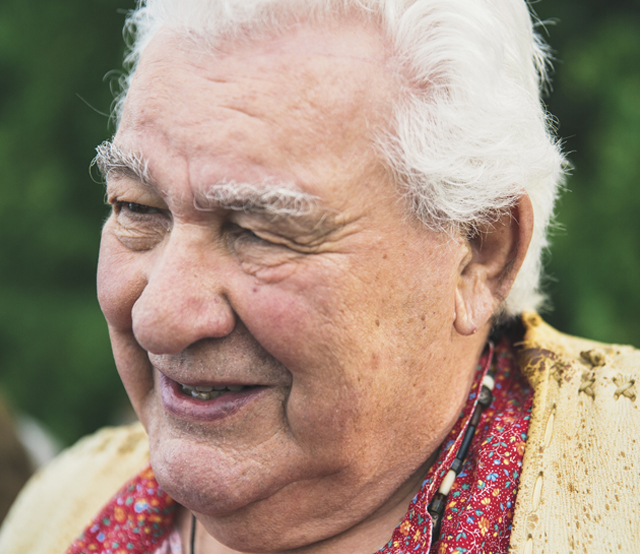
At a forest service conference in the early 1960s, Ericksen learned of the new environmental concern, acid rain. When he took up the fight against acid rain Ericksen’s colleagues thought he had a screw loose. He figured if he couldn’t convince his peers and his generation of the dangers of acid rain, maybe he could teach young people about it. And so Voyageur Wilderness Outfitters became Voyageur Wilderness Programme—an educational program focusing on ecology and the importance of the environment and the dangers it faces.
“He was at the right time. There was all that hippy movement. Things were very volatile and impressive. They came in droves,” says Guy. Ericksen and Goff were teaching 1,200 to 1,400 young students through their 10-day program every summer. The children arrived by bus, usually spending the first night at the lodge, like we did. They were given instructions on how to canoe. Many had never seen a canoe or touched a paddle.
“We taught them to roll their sleeping bags from the head first in case the roll gets wet,” Guy laughs. “It’s okay to have it damp at your feet and better to have it dry at your head. They’d learn things like that and then they would head out for a seven-day wilderness trip.”
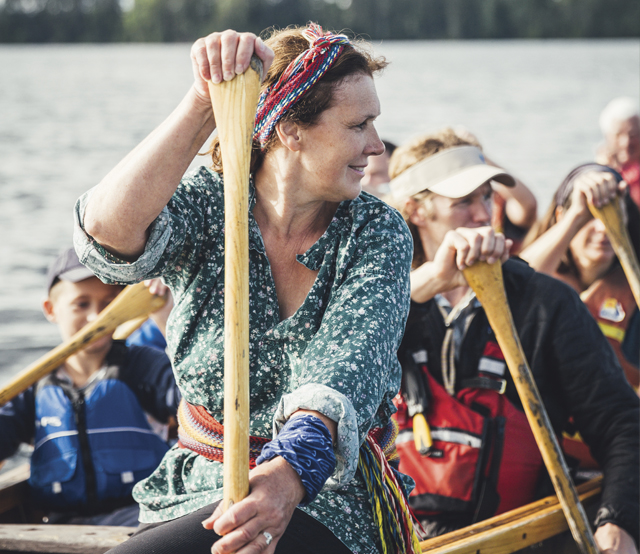
Because the canoe was the only way to travel into the park—the only way anybody has ever travelled in the park—it was an obvious vehicle to use to teach ecology. But Ericksen and Goff needed a theme to interest the youth.
“The lure of the voyageur grabs young people. It’s adventurous. It had lots of pizzazz. It still does,” says Guy. “The voyageurs were He-Men, they had to be. The Grand Portage on the Pigeon River was nearly nine miles long. The voyageurs carried two 90-pound bales on their shoulders. They’d get an extra Spanish dollar if they carried a third.”
Guy and his wife Leá were good friends with Ericksen and Goff and had spent the Thanksgiving weekend of 1977 at the lodge putting away canoes and closing up for the winter. Ericksen was a severe diabetic and not feeling well. Guy remembers telling him to slow down and relax and write more. Ericksen replied, “If I’m going to go, I’d sooner be doing what I’m doing.”
Goff called early that Monday morning to say that Ericksen died in the night of a massive heart attack.
For seven years Goff tried to keep the business going until finally she called Guy and Leá, “You’re the only ones who know the program. You would be perfect.”
Guy is an aboriginal Métis elder. He was at the time president of Winnipeg’s Festival du Voyageur. In 1804, his direct ancestor, Francois Savoie, signed a voyageur contract at Fort William to travel between Fort William and the Red River Settlement. Running an outfitting business called Voyageur Wilderness is in his blood. The Savoie family bought the shares of the company and ran their first school programs the summer of ‘86.
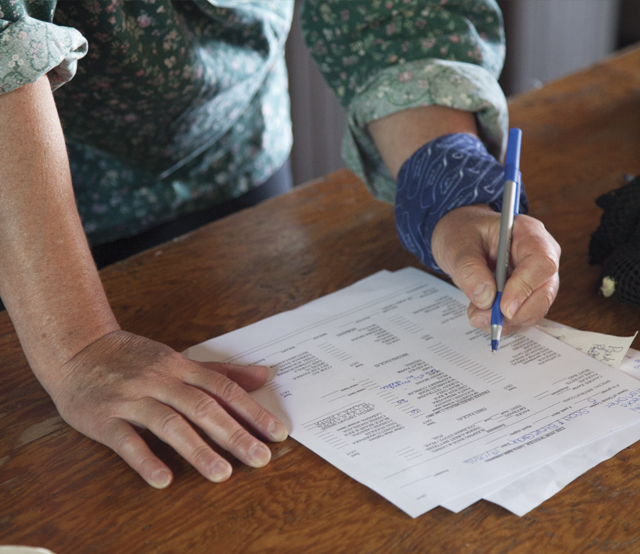
The charm of Voyageur Island is that it feels like nothing has changed since the ‘60s. However, Guy tells me that his business, like most, needed to evolve to change with the times.
The summer after the September 11 attacks, five long-time schools cancelled their trips to Voyageur Island. American schools at the time were cancelling all international trips.
“After the plane crashed into the towers, we lost one-third of our business in one swoop,” says Guy. And just when Voyageur Wilderness Programme was almost back to pre-9/11 numbers, along came the economic crisis of 2008.
At the age of 67, Guy officially retired and passed the bourgeois hat to his second eldest of six children, Michelle. As it turns out, running a successful outfitting business in the north requires the wearing of many different hats.
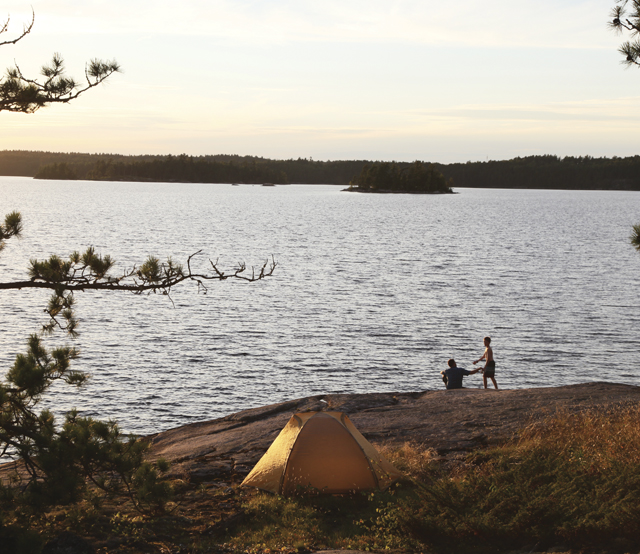
While Voyageur Wilderness Programme still runs their 10-day school group program, Michelle is focusing more on outfitting private groups as part of their complete business model.
“I’m fortunate to have an incredible elder like my dad,” say Michelle. “He empowered me to try new things with the business and not be afraid to make some mistakes. He always says, ‘If you don’t try, you won’t know—so what do you have to lose?’”
Canoeists heading into Quetico would call Voyageur Wilderness Programme and ask Michelle if she rented canoes. They asked if they could stay a night before or after their trips. Adventurers wanted her to help them with route planning, meals and equipment rentals. It seems when you are located 500 meters from 1.1 million acres of protected Canadian wilderness and say yes to all sorts of customer requests, soon enough you will find yourself in the full service canoe outfitting business.
“We’ve simply expanded our emphasis of our eco-practices to the outfitting of individuals, smaller groups and families,” says Michelle. “In them we try to install good values and educate them about the environment. I believe that with knowledge comes respect.”
Before we venture into Quetico Provincial Park, Michelle walks us through a passionate backcountry best practices presentation that I’m sure she’s done one thousand times before. At the end she tells us that she believes our time together creating memories and experiences will inspire us to preserve and protect the wilderness for future generations.
Doug and I paddle off toward the park in silence.

What happens to the third generation of children with Métis and voyageur blood who spent their summers on a small island just outside a wilderness canoe tripping paradise?
Michelle’s children had only one rule: They could go anywhere on the fiveacre island so long as they were wearing their lifejackets. As they got older they were assigned chores like sweeping cabins, working in the pack house, stacking wood and teaching guests how to paddle. At 18 they ventured into the park as wilderness guides and continued to do so throughout university.
Madeleine, now 27, tells me that she and her older brother Joseph have plans to someday return to Voyageur Island and run the business together. For now however, she is happy as a paramedic in a rural area south of Winnipeg. Joseph is a wildlife biologist and conservation officer in the tiny hamlet of Qikiqtarjuaq, Nunavut. He couldn’t be part of the filming week because he was even further north in Pond Inlet tagging narwhals.
Madeleine thinks when her parents decide to retire she and Joseph have lots of things that they will keep exactly the same but there are a few things this new generation would like to change.
“There will be two of us, so we’d like to run programs on the island all year long,” she says. They also have plans to reorganize the pack house to make outfitting groups more efficient. These are small but important changes you might end up thinking about rolling tents and nesting pots as teenagers or now on slow nights in an ambulance or on ice floes when the narwhals don’t show up.
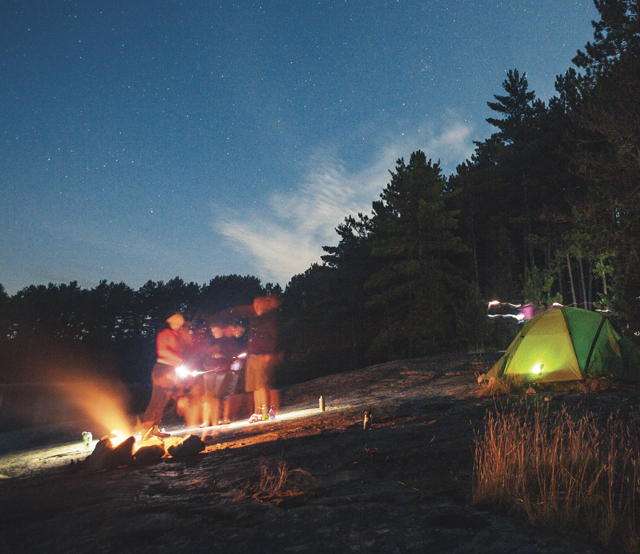
Like every Voyageur Wilderness school program since the 1960s we return to Voyageur Island from our canoe trip in Quetico to the welcoming sound of bagpipes. Now we are relaxing in the main lodge, the adults reading and editing photos while the kids are back at the board games. The fire in the sauna by the lake is heating the rocks above.
When the cook rings the iron triangle dinner bell Doug and I sit at a large round table for a traditional banquet with three generations of French Canadian voyageurs—Guy, Michelle and Madeleine, the direct descendants of Francois Savoie.
After the sit down supper we meet outside at a teepee for closing ceremonies— to appreciate our connection to the Earth and be symbolically welcomed into the family of the voyageurs.
Doug and I were mangeurs de lard when we arrived. And we were still pork eaters when we came out of the park. But now we are real voyageurs.
Michelle closes the evening with a reading from First Nations’ leader Chief Seattle, “This we know: All things are connected. Whatever befalls the earth befalls the sons of the earth. Man did not weave the web of life; he is merely a strand in it. We are all connected.”
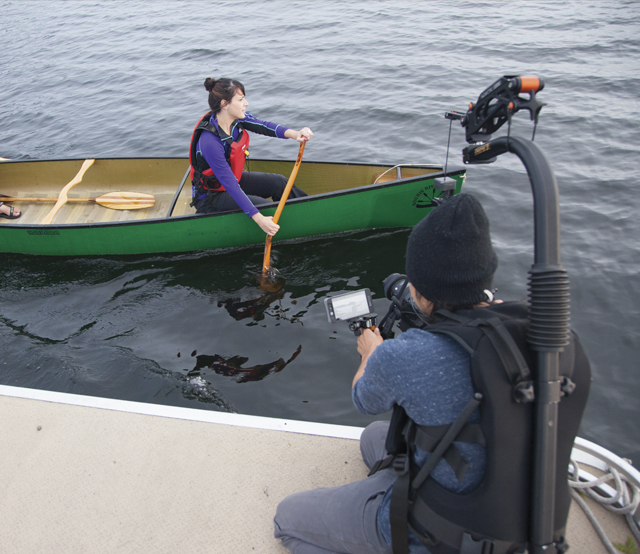
The segment of Goh Iromoto’s film The Canoe filmed during our visit to Voyageur Island is entitled, “The Connector.”
The canoe and the voyageurs connected Fort William to settlements further west and northwest, essentially opening and connecting a nation at a time when there was no other possible way to do so. And now, protected areas like Quetico Provincial Park provide a place canoeists can go to connect with nature and to escape a world that today is far too connected all of the time.
“In today’s time it is so great for school children and families to get back to communicating, to really connecting and interacting with each other,” says Michelle in The Canoe. “These interactions weave communities and families tighter. Connection is what makes the experience in the wilderness so strong. Wilderness really is part of who we are, it is part of life, it is part of the true raw emotion that connects us all.”
Scott MacGregor is the founder and publisher of Canoeroots. Goh Iromoto’s film featuring Voyageur Wilderness Programme won the Reel Paddling Film Festival Best Canoeing Film award and has been entered in another 55 film festivals around the world. It has been featured in National Geographic’s Short Film Showcase. Watch The Canoe, the story of Canada’s connection to water and how paddling in Ontario is enriching the lives of those who paddle there.
A glorified, albeit patriotic, trash bag with a hood. | Feature photo: Adobe Stock



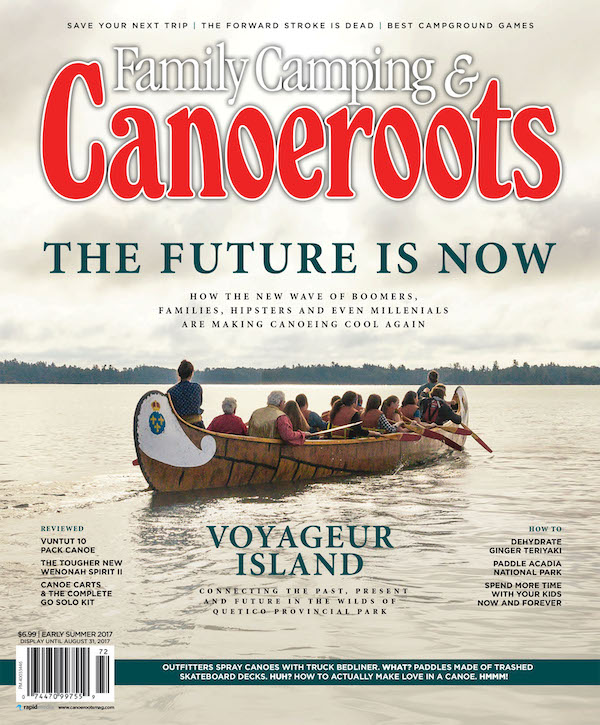 This article was first published in the Early Summer 2017 issue of Canoeroots Magazine.
This article was first published in the Early Summer 2017 issue of Canoeroots Magazine. 

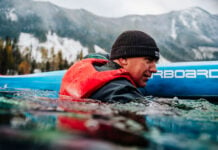
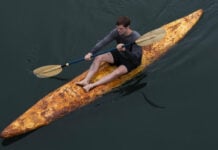


Once upon a time, I had the good fortune to be “an ace wilderness guide” at Voyageur. Jean recruited a bunch of us from universities in southern Ontario. Of that group, many of us became educators, doctors, company CEO’s, guides and more. Our common bond was humour and a depth passion for that magical place we called “the bush”. I recall my first return to the island, as the sound of the pipes that announced our arrival and it was if we had been transported back in time. Now many years later, I can still go back and hear the laughter and the words of Chief Seattle. Thankfully, the water still flows and the tales are still shared.